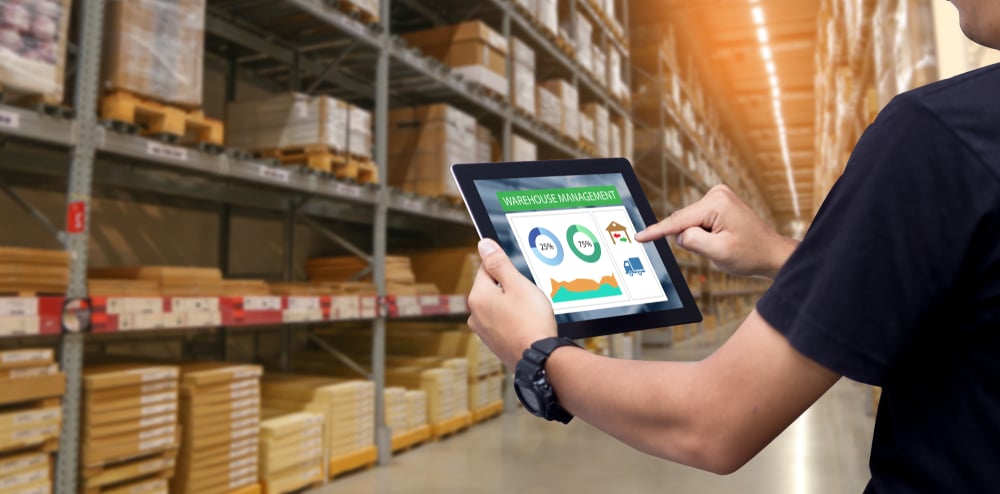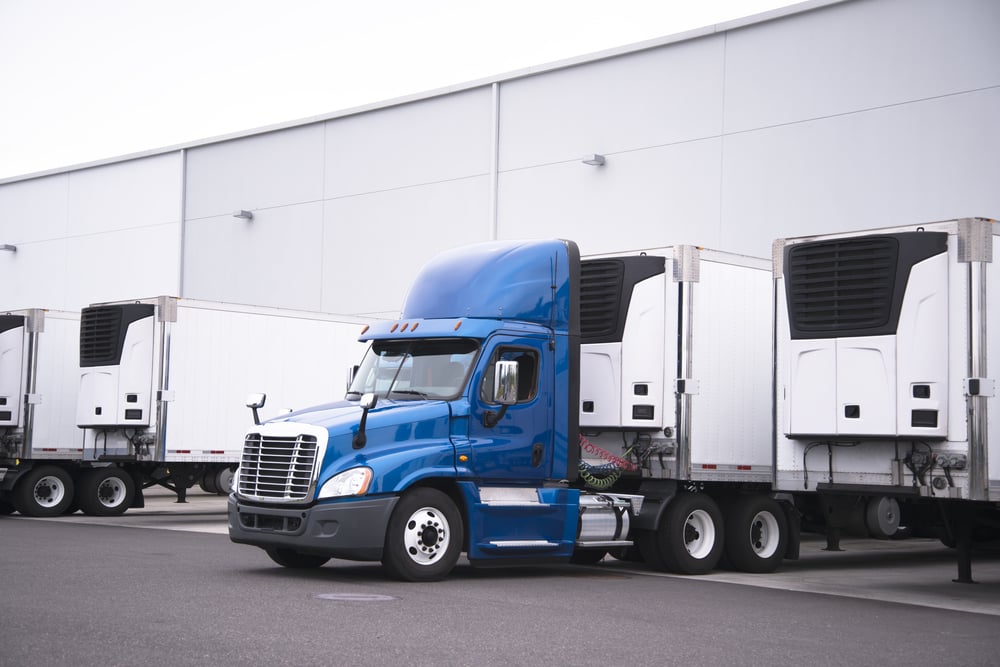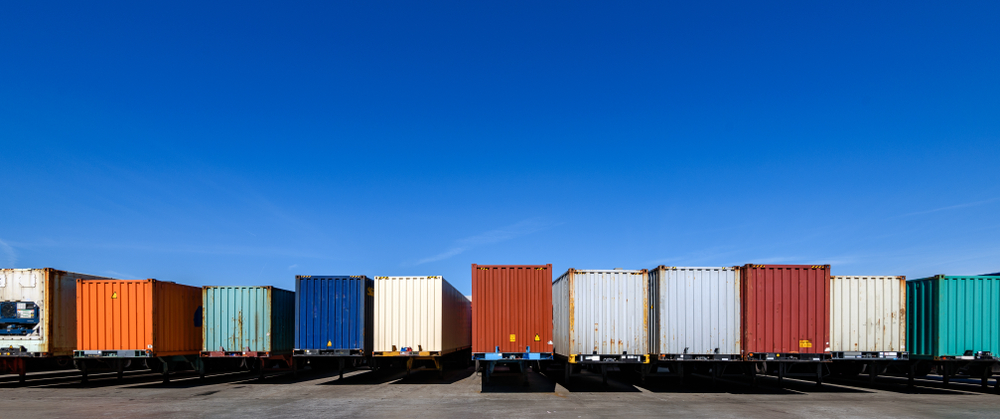Cargobot Direct
Open Roads Ahead: The Ultimate Guide to Shipping Freight with Ease This Year
Introduction

Shipping freight can be challenging, and it's easy to make mistakes. Working with an experienced company specializing in freight shipping services is a great way to streamline this process and make things much easier.
These professionals can provide tips on how to ship items more efficiently while taking advantage of the latest technology solutions.
Following the best practices for shipping freight can keep costs to a minimum and create a much better experience for navigating the supply chain.
Other Content Worth Reading:
Freight Shipping: An Industry Overview for 2023

The freight shipping industry continues to evolve while adapting to emerging technologies and ever-shifting market dynamics. Truckload freight shipping continues to see significant investments in automation, digitalization, and eco-friendly tech solutions. Many of these advancements have led to improved logistical processes and a greater emphasis on sustainability.
Key challenges for the freight industry in 2023 include navigating volatile fuel prices, supply chain disruptions, and the ongoing labor shortage. Despite these hurdles, the industry remains resilient and poised for growth, with opportunities arising from e-commerce expansion and strategic partnerships. Freight shipping companies will continue to adapt as the industry remains a cornerstone of global trade and economic development.
The Importance of Inland Freight Shipping to Global Trade
Inland freight shipping plays a vital role in connecting businesses, industries, and economies across the globe. Freight shipping services include transporting goods via road, rail, and inland waterways. Inland freight provides a cost-effective and efficient option for moving goods over long distances.
The benefits of inland freight shipping include scalability, and it's much more cost-effective than other shipping methods. Using a freight shipping service also helps to decrease road congestion and greenhouse gas emissions. However, inland shipping faces its own set of challenges, such as infrastructure bottlenecks, regulatory hurdles, and the need for constant innovation to meet growing demands. Despite these challenges, inland freight shipping remains vital to global trade.
The Impact of E-commerce on Freight Shipping
E-commerce has drastically transformed the freight shipping industry by increasing demand for fast and efficient delivery services. This revolution has created new challenges for carriers, including the need for enhanced logistics capabilities, shorter delivery times, and more flexible options to cater to the ever-evolving consumer preferences.
Many e-commerce shippers face increasing pressure to streamline operations and meet customer expectations. Freight shipping companies have embraced technology to optimize supply chains, and invested in automated warehouses. Tracking systems and the adoption of last-mile delivery solutions also helps to improve the overall shipping experience.
The Role of Transportation Management Systems (TMS) in Freight Shipping
TMS platforms play a crucial role in streamlining and optimizing freight shipping processes. These digital software solutions allow shippers to effectively manage, track, and monitor all aspects of their logistics operations. Modern TMS options offer route optimization, carrier selection, real-time tracking, and freight audit features, enabling shippers to make informed decisions and reduce costs.
Shippers can use these tech solutions to identify the most efficient routes, choose the best carriers, and reduce transit times. Using these services can often improve customer satisfaction. Real-time tracking ensures transparency and contributes to more efficient and sustainable logistics operations in the freight shipping industry.
Freight Shipping and the Gig Economy: Opportunities and Challenges
The gig economy offers various opportunities and challenges for shipping freight. Gig platforms enable independent contractors to connect with shipping companies. These online platforms provide flexibility, cost reduction, and greater accessibility to more jobs. This evolving workforce model potentially leads to a more agile and responsive industry to address supply chain bottlenecks and capacity constraints.
However, the gig economy also introduces challenges, such as a lack of job security and the absence of benefits for independent contractors. Moreover, regulatory concerns and safety issues may arise due to inconsistent training and oversight. Balancing these opportunities and challenges is essential to harness the gig economy's potential within freight shipping.
Types Of Freight Shipping Services - Listed by Popularity
LTL (Less-Than-Truckload) - LTL freight shipping is popular for small to medium-sized shipments that don't require a full truckload. Benefits include lower costs, flexibility, and eco-friendliness, while drawbacks include longer transit times and potential handling issues.
FTL (Full Truckload) - FTL shipping is ideal for large shipments occupying an entire truck. The benefits of FTL shipping include faster transit times and less handling, but the drawbacks are higher costs and less flexibility.
Intermodal - Intermodal shipping combines different modes of transportation (e.g., truck, rail, and sea) for efficient freight movement. Benefits include cost savings, reduced carbon emissions, and increased flexibility. The disadvantages of using these services involve longer transit times and potential delays due to transfers between modes.
Expedited - Expedited shipping is a premium service for time-sensitive shipments to ensure fast delivery. Some of the benefits include guaranteed delivery times and enhanced tracking measures, but drawbacks include high costs and limited availability.
Air Freight - Air freight is used for high-priority or lightweight shipments. The advantages include fast delivery times and global reach, but the drawbacks are higher costs and weight restrictions compared to truckload freight shipping.
Supporting content
How to Ship Freight More Efficiently This Year

Are you having trouble keeping up with the latest technology solutions and demands? Following a few tips can make shipping freight much easier.
For example, you can optimize packaging by choosing the right-sized boxes and pallets to lower shipping costs and prevent damage. Clear labeling is also important in ensuring your shipment arrives at its destination.
Researching rates for a new freight pickup request and delivery times is important in lowering costs.
Using technology is also a great way to optimize routes, track shipments, and analyze performance data.
1) Update Yourself on Freight Classifications and Rates
Freight classifications and rates are essential for shippers to understand in order to optimize shipping costs. Freight class is determined by the National Motor Freight Classification (NMFC) system, which groups items based on factors like density, stowability, handling, and liability. Each group is assigned a freight class number, which directly impacts shipping rates.
Understanding freight classifications allows shippers to accurately classify their goods to prevent costly misclassifications. Familiarizing yourself with this system allows shippers to negotiate better rates, streamline shipping processes, and ultimately save on transportation expenses. Proper classification is key to unlocking cost-effective and efficient shipping solutions.
2) Take Time to Understand Accessorial Charges
Accessorial charges are extra fees imposed by carriers for additional services beyond standard shipping, such as liftgate delivery, inside delivery, or residential pickups. These charges can quickly inflate the cost of shipping if not anticipated.
Here are tips on how to avoid unexpected accessorial charges.
- Thoroughly review carrier rate sheets and contracts to understand potential fees.
- Accurately describe the shipment's requirements, including special handling or parcel shipping needs, when requesting quotes.
- Provide detailed delivery instructions to carriers, ensuring they're aware of any unique circumstances.
- Consider negotiating accessorial charges with carriers or consolidating services to reduce costs.
- Regularly audit invoices to identify and address discrepancies or recurring charges.
3) Focus on Reducing Freight Shipping Costs
Do you wish you could predict and control load cost fluctuations more effectively? One way to keep freight shipping costs to a minimum is to partner with carriers that offer competitive rates and reliable service.
You can also analyze shipping routes to identify the most efficient paths, minimizing transit times and fuel consumption. Using software tools or consulting logistics experts can help you optimize routes.
Combining smaller shipments into larger ones and scheduling shipments during off-peak hours can also help you lower the cost of shipping. Building strong relationships with carriers will also make it easier to negotiate better pricing with carriers.
Implementing these different strategies can help shippers reduce freight shipping costs and enhance overall operational efficiency.
4) Practice Comparison Shopping for Freight Shipping
The first step in comparing freight shipping options is to gather quotes from multiple carriers. Consider factors like transit time, reliability, FedEx freight box rates, and additional services offered.
Using technology like freight quote comparison tools or freight broker platforms can streamline the process and make it easier to gather data. These tools allow you to input shipment details, such as weight, dimensions, and destination, to generate real-time quotes from various carriers.
You also need to remember to compare not only the base rates but also any surcharges and accessorial fees. Read reviews and testimonials to gauge customer satisfaction and reach out to carriers for further information if needed.
Always prioritize quality and reliability alongside cost to ensure you don't have any regrets about shipping freight.
5) Compare Vetted Carriers
Choosing the right carrier for freight shipping is a big decision. Always taking the time to verify credentials and research safety records is well worth the effort.
It's also important to make sure the carrier has adequate insurance coverage to protect your goods in case of an accident or damage during transit. Ask for proof of insurance and review the policy to confirm coverage limits and exclusions.
Checking out reviews or testimonials from other shippers can also be helpful in finding the right carrier to meet your needs. Obtaining quotes from multiple carriers to compare prices and services offered is always recommended.
Don't simply choose the cheapest option—consider factors like transit time, communication, and additional services that may impact the overall value of the services.
6) Track and Manage All Your Shipments Using Technology
Would you like to see real-time incident notifications of your loads? Technology makes it possible to track and manage shipments to increase efficiency and transparency.
GPS tracking systems enable real-time monitoring of shipments. Real-time alerts provide instant updates on shipment statuses at UPS store locations or while the cargo is in transit.
Automated reporting simplifies documentation and compliance, saving time and resources. Embracing modern tracking and management tools creates a much better logistics experience, leading to improved customer satisfaction, reduced costs, and better operational control.
7) Get a Reliable Carrier Payment Distribution System
Using a reliable payment distribution system is crucial for maintaining strong relationships with carriers. Timely and accurate payments are essential for retaining trust, fostering loyalty, and avoiding any disputes.
You will need to consider multiple factors before choosing a payment system, such as scalability, ease of use, integration capabilities, and customer support.
An automated payment platform offers numerous benefits, such as reducing human error, improving efficiency, and enhancing security. These platforms also enable real-time tracking of transactions and offer customizable reporting for better financial management.
Investing in a reliable carrier payment distribution system not only streamlines your payment processes but also contributes to the long-term success of your business.
Supporting content
Why Ship Freight Using Cargobot Direct?
![]()
All you need to do is visit Cargobot's website and create an account to use these services. Once your account is created, you can log in to Cargobot Direct with your email and password. A dedicated customer associate can walk you through the process of creating a shipment and choosing a carrier.
You can review the shipment details and accept the terms and conditions. Once complete, you can track your shipment in real time to know the exact location of your cargo. Once your shipment arrives, you'll receive a delivery confirmation email.
Here are some of the benefits of using Cargobot Direct for shipping freight.
Quickly Find the Right Mode of Transportation for Your Freight
Selecting the appropriate mode of transportation for your freight depends on factors like cost, speed, distance, and cargo type. Weighing all of these factors is essential in finding the best service to meet your needs. For short distances and flexible delivery times, truckload freight shipping is often the most cost-effective and versatile option.
On the other hand, rail transport provides a more eco-friendly and economical choice for long distances, while air freight offers unmatched speed for urgent deliveries. Ocean freight pickup is ideal for large, heavy cargo and international trade, providing cost savings for high-volume shipments. Evaluating your budget, delivery timeline, and cargo requirements can help you choose the best freight shipping service.
Access 25,000+ Vetted High-Quality Carriers
Would you like to outsource parts of your supply chain strategy? Cargobot Direct gives you access to over 25,000 vetted, high-quality carriers to help transport your cargo. Leveraging this platform allows shippers to streamline their shipping processes.
Advanced algorithms match shippers with the most suitable carriers based on several factors that can lead to significant time and cost savings. This marketplace provides a transparent and competitive environment, driving down shipping costs for shippers.
Using an online platform allows you to optimize your supply chain, minimize shipping costs, and ensure the timely transportation of your goods.
Reliably Track and Trace All Your Freight Shipments
Shipping freight is a challenge if you are unable to keep track of your cargo. Cargobot Direct provides real-time GPS tracking, and electronic proof of delivery systems will increase visibility throughout the entire supply chain.
Using this technology empowers companies to proactively manage potential disruptions, optimize routes, and respond to customer inquiries. Using advanced analytics and data-driven insights can help identify trends, bottlenecks, and areas for improvement.
Keep All Important Documentation Organized and Accessible
Do you need a better understanding of your own supply chain? Cargobot's innovative cloud-based solution makes it simple to keep all of your documents organized and easily accessible.
The user-friendly mobile app simplifies operations by offering digital signature capabilities, storing bills of lading (BOLs), and incident-related paperwork. This all-in-one platform not only reduces the risk of misplaced or lost documents but also improves efficiency and communication.
Switch to the Next Standard of Digital Freight Today!
Take a moment today to reach out to Cargobot and experience its state-of-the-art platform for effortless document management and a much more organized logistics experience.
Supporting content
From Our Blog
Stay up to date with what is new in our industry, learn more about the upcoming products and events.

The Ultimate Guide to Cold Chain Shipping: Ensuring Temperature-Sensitive Shipments Stay Safe

Refrigerated LTL Carriers: The Smartest Way for Cargo Shippers to Transport Temperature-Sensitive Freight


